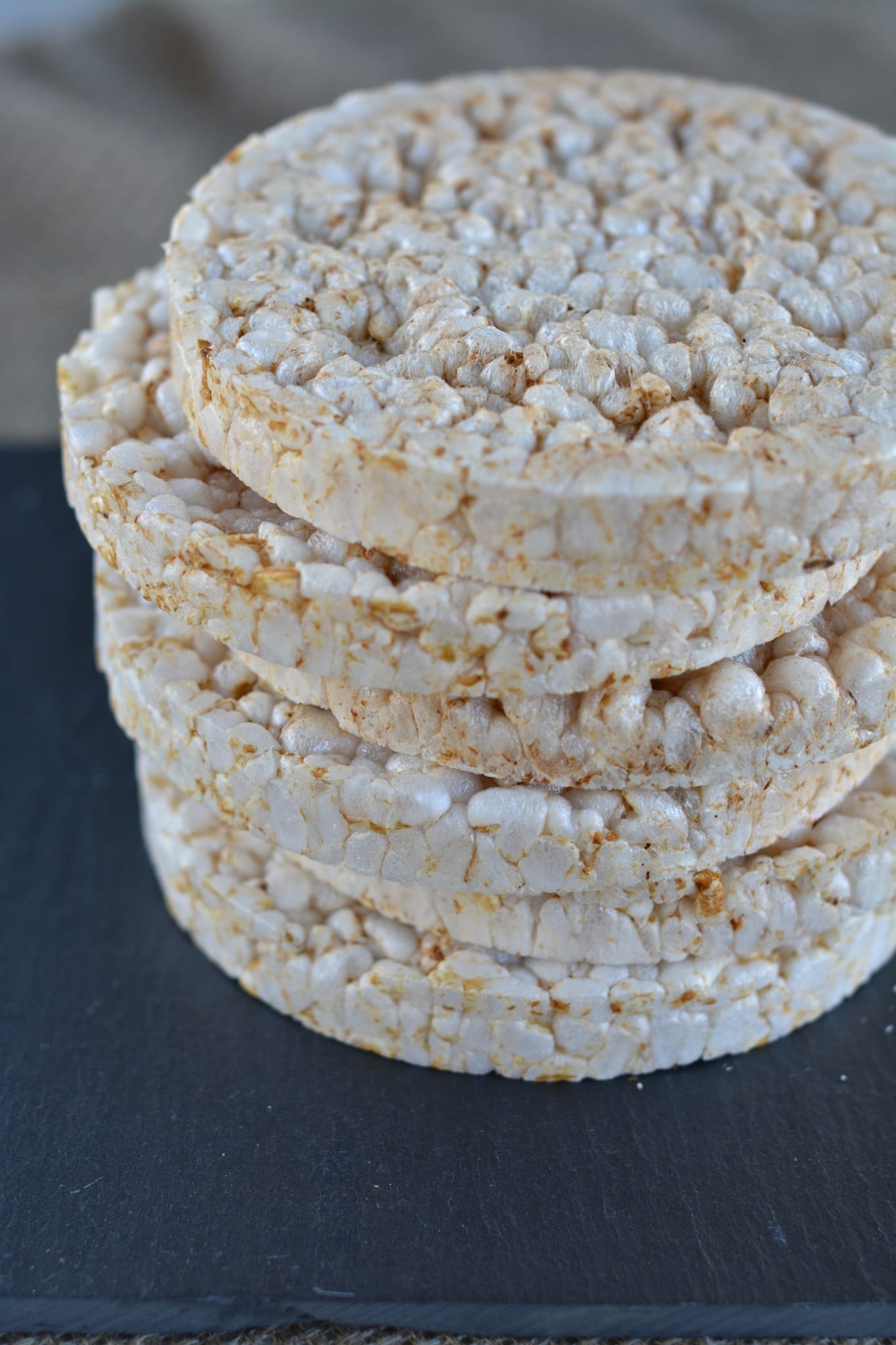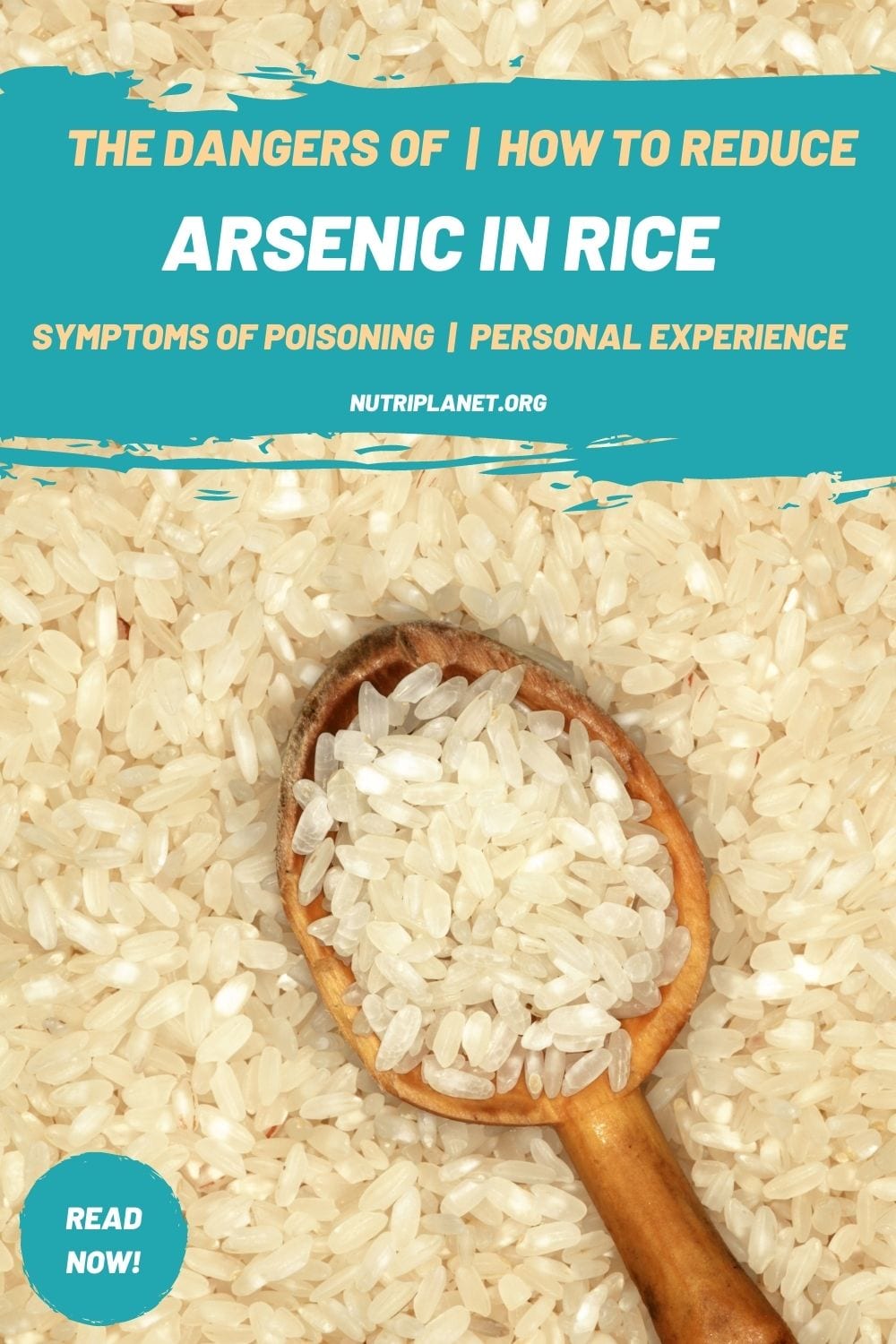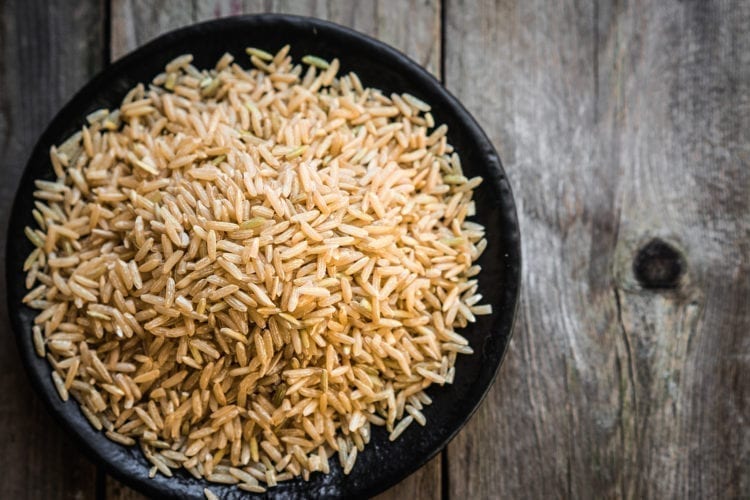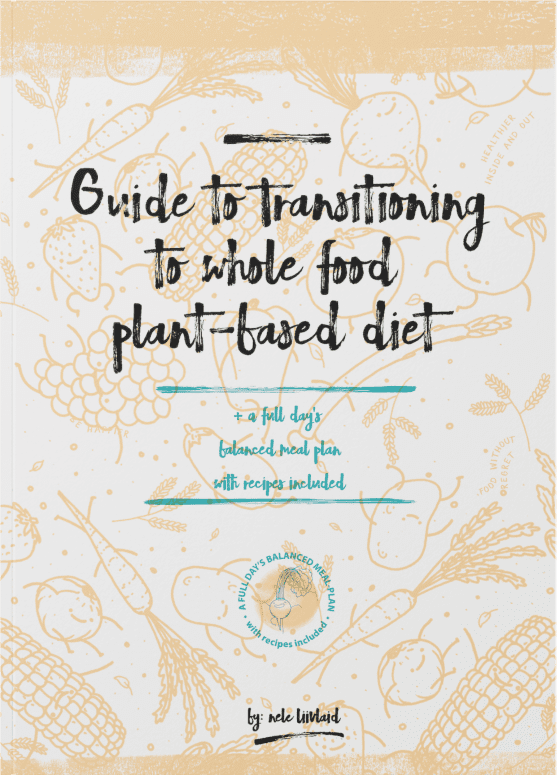Learn the dangers of arsenic in rice, what are arsenic poisoning symptoms, which are the most contaminated foods, and how to reduce the arsenic exposure.
All You Need to Know About Arsenic in Rice
Table of contents
- All You Need to Know About Arsenic in Rice
- What is Arsenic?
- How You Can Be Exposed to Arsenic
- Why is Arsenic Harmful for Humans?
- Symptoms of Arsenic Poisoning:
- Testing Arsenic Levels
- How Does Arsenic Get in the Rice?
- How Much Rice is Safe to Eat?
- How to Reduce Arsenic in Rice and in Your Life
- My Experience with Arsenic in Rice
- Conclusion About Arsenic in Rice
If you prefer listening to reading, feel free to watch the below video:
What is Arsenic?
Arsenic (As) is a naturally occurring element of the earth’s crust that can be found in small amounts throughout the environment. This type is called organic arsenic.
However, arsenic also can be released into the environment as a by-product of agricultural or industrial processes as highly toxic inorganic arsenic.
While inorganic forms of arsenic are more toxic, it doesn’t matter which form you’re exposed to. Meaning, exposure in high levels for an extended period of time can still have negative side effects on humans.
How You Can Be Exposed to Arsenic
There are several ways you can become exposed to arsenic:
- through drinking contaminated water;
- using contaminated water in food preparation and irrigation of food crops;
- industrial processes;
- eating contaminated food;
- smoking tobacco.
Inorganic arsenic is naturally present at high levels in the groundwater of a number of countries, including Argentina, Bangladesh, Chile, China, India, Mexico, and the United States of America.
Foods that contain traces of arsenic include meat, poultry, and fish. Normally, poultry contains the highest level of arsenic. It’s due to antibiotics in the chicken feed. Rice also contains higher levels of arsenic than water.
It’s noteworthy that only 10% of airborne arsenic makes it into circulation. At the same time, our bodies absorb 90% of waterborne arsenic.
Why is Arsenic Harmful for Humans?
Studies have demonstrated that drinking enough inorganic arsenic over a long enough period of time can be dangerous. Namely, it can lead to non-melanoma skin cancers, and cancers of the bladder, liver, kidney and lung.
On the other hand, long-term exposure can cause chronic arsenic poisoning. The latter manifests itself through skin lesions and skin cancer.
Symptoms of Arsenic Poisoning:
- red or swollen skin;
- skin changes, such as new warts or lesions;
- abdominal pain;
- nausea and vomiting;
- drowsiness;
- headaches;
- confusion;
- diarrhoea;
- abnormal heart rhythm;
- muscle cramps;
- tingling of fingers and toes.
In severe cases people might also have:
- a metallic taste in the mouth and garlicky breath;
- excess saliva;
- problems swallowing;
- blood in the urine;
- cramping muscles;
- hair loss;
- stomach cramps;
- convulsions;
- excessive sweating;
- vomiting.
Long-term exposure to arsenic can cause more severe symptoms. You should seek emergency help if you experience any of the following after a suspected arsenic exposure:
- darkening skin;
- constant sore throat;
- persistent digestive issues.
Futhermore, those with higher arsenic levels tend to have higher rates of food allergies, tend to not sleep as well, tend to not feel as well.
Testing Arsenic Levels
Urine tests should be carried out within 1 to 2 days of the initial exposure. These tests can also be used to help diagnose cases of apparent arsenic poisoning.
Tests on hair and fingernails can determine the level of arsenic exposure over a period of up to 12 months. These tests can give an accurate indication of arsenic exposure levels. However, they do not show what effects they may have on the person’s health.
How Does Arsenic Get in the Rice?
Mainly, the toxic inorganic arsenic comes from pesticides. Considering the latter, we could assume that organic rice has less arsenic than conventionally grown rice. However, this is not true.
It’s because arsenic pesticides were banned 30 years ago. Nevertheless, 30,000 tons of arsenic chemicals already got dumped onto cotton fields in the southern states. So, it’s clear that there are still arsenic residues. That’s why they specifically choose arsenic-resistant varieties of rice plants in the South. However, humans haven’t become arsenic resistant.
How Much Rice is Safe to Eat?
Arsenic in rice is a cause for concern, according to a consensus statement by the European and North American societies for pediatric nutrition.
If your only source of rice is just rice, then it recommends no more than one or two servings for the whole week. For example, 1 serving is ¼ cup of uncooked rice or 1 cup of rice milk.
For the exact table with recommended servings of different rice products go here.
The most contaminated rice products are:
- Rice Krispies.
- Brown rice syrup – toddler formulas with added organic brown rice syrup have 20 times higher levels of [toxic] arsenic.
- Rice milk – UK has banned the consumption of rice milk for young children, and no more than half a cup a day for adults.
- Rice pasta and rice cakes end up similar to pure rice. However, when pasta is cooked, we’d expect the levels to be cut 40 to 60%, like when you boil and drain rice.
Rice vinegar doesn’t seem to be anything to worry about.
How to Reduce Arsenic in Rice and in Your Life
There are several ways you can reduce arsenic in the food that you consume daily.
Which rice has the most and the least of arsenic
First of all, it greatly depends on the soil the rice was grown on. Extensive recent testing by the FDA found that long grain white rice, which is what most people eat, appears to have more arsenic than medium or short grain rice. However, this can be due to the fact that most of the short grain rice is grown in California which has significantly less contaminated rice paddies than those in the South, such as in Texas or Arkansas, where most of the long grain rice is grown.
Brown rice averages two-thirds more toxic arsenic than white rice. And it doesn’t seem to depend on the location. However, the arsenic in brown rice appears to be less bioavailable than the arsenic in white rice. It’s because the texture of brown rice may cut down on the release of arsenic from the grain, or perhaps the bran in brown rice helps bind it up.
Red and black rice, on the other hand, may contain even less arsenic than white rice. More precisely, coloured rice samples purchased mostly in the United States were better than brown or white. Yet, a dozen samples of red rice purchased in Europe were as bad, or even worse, as brown rice.
The main ways to reduce arsenic in your diet:
- Diversify your diet by eating rice from different brands and regions;
- Include more gluten-free grains into your diet: buckwheat, quinoa, sorghum, millet, oats, and teff.
- Avoid processed foods sweetened with brown rice syrup.
- Choose other milks instead of rice milk. Options include soy, oat, hemp, or almond milk. However, be careful with kids drinking too much almond milk. There have been a few case reports of little kids drinking four cups a day, running into kidney stone problems. That’s due to the relatively high oxalate content, averaging about five times more than soy milk.
- Cook rice in plenty of water before consuming.
How to cook rice to reduce its arsenic content
Here are easy steps for cooking rice to reduce its arsenic content by a whopping 60%:
- Measure water and rice.
Take 10 parts water and 1 part uncooked brown rice.For example, 10 cups of water and 1 cup of dry rice. Washing the rice is optional.
- Boil the rice.
Bring water to boil and simmer until the rice is cooked (25-30 minutes). Pre-soaked rice cooks quicker, i.e. 15-20 minutes.
- Drain the rice.
When the rice is cooked, drain the excess water.
My Experience with Arsenic in Rice
In the summer of 2015 it had become my habit to consume rice cakes every evening as a late night snack or a dessert. Mainly because I thought it was a healthier alternative to sweet treats. So, I had approximately 6 cakes every day.
Now, Consumer Reports recommends no more than 7 points worth of rice products per week. Simple calculations show that I got 5 points daily, i.e. 35 points weekly. And that is 5 times more than recommended (just from the rice cakes).
According to Swedish National Food Agency rice cakes are not at all recommended to give to under 6-year-olds. The reason is that the level of arsenic is the highest in those dry cakes. They said that it is dangerous for young children to consume even 2-4 rice cakes per week.
My symptoms of arsenic poisoning
In the middle of September I started to feel weird – I couldn’t really point a finger on anything particular. I just felt strange and tired. By the end of September I had:
- headaches every day and all through the night;
- tingling of my face and hands;
- fatigue;
- dizziness;
- elevated heart rate;
- balance disorders.
One night when I tried to stand up to go to toilet I simply couldn’t because I wasn’t able to differentiate between the floor and the ceiling. Consequently, I just had to lay down again.
That episode really made me worry and I suddenly remembered the article about arsenic in rice I had read a few weeks prior. So, I started to search for symptoms of arsenic poisoning and immediately recognised my own ailments.
I ditched all rice and rice cakes immediately and I felt well after 2-3 days with no symptoms left.

Conclusion About Arsenic in Rice
Considering the above, stay on the safe side and remember the following simple tips:
- Brown rice contains more arsenic than white rice, as arsenic is concentrated in the husk.
- Eat rice and rice products no more than a few times a week. Don’t give your children rice and rice products more than 4 times a week.
- Cook the rice in plenty of water (10:1 ratio) and drain afterwards reducing the amount of arsenic by more than half.
- Don’t give rice cakes to children younger than 6 years old. There are many delicious alternatives, e.g. spelt, rye and corn cakes.
- Eat different brands as the amount of arsenic varies among different brands of the same product.
- Replace rice milk with safer alternatives, i.e. soy, almond, hemp, buckwheat, and oat milk.
- Remember that buying organic does not affect the levels of arsenic.

https://www.who.int/news-room/fact-sheets/detail/arsenic
Inorganic vs Organic Arsenic by Vibrant Health
https://www.eurofinsus.com/food-testing/resources/arsenic-testing-guide/
https://www.healthline.com/health/arsenic-poisoning#
https://www.medicalnewstoday.com/articles/241860#what-is-arsenic
https://nutritionfacts.org/video/The-Effects-of-Too-Much-Arsenic-in-the-Diet/
https://nutritionfacts.org/video/which-brands-and-sources-of-rice-have-the-least-arsenic/
https://nutritionfacts.org/video/Where-Does-the-Arsenic-in-Rice-Mushrooms-and-Wine-Come-From/
https://nutritionfacts.org/2021/01/12/how-much-arsenic-in-rice-is-too-much/
https://nutritionfacts.org/2020/12/15/which-rice-has-less-arsenic-black-brown-red-white-or-wild/
https://nutritionfacts.org/video/How-to-Cook-Rice-to-Lower-Arsenic-Levels/





















Very common sense. I have known about arsenic in rice and yes we tend to disregard the weight of the toxicity factor. I was brought up rinsing rice before cooking and draining the cooking water but when I married my husband had been brought up with unrinsed rice with just enough to cook it. We don’t eat it daily so I never noticed any symptoms but I may not have recognized them. Your experience contains valuable information. Thank you.
Hi Fayette! I never knew anything about it until my unfortunate experience. However, it’s only happened with over-consumption (I’d say ?) of rice cakes. I’m glad I stumbled upon this information though, because who knows how I might have ended up otherwise ?♀️
This article makes me very curious to know about the levels of arsenic in gluten free substitution foods (many of which contain brown rice flour). I have gone gluten free and use these products multiple times a day on a daily basis and have noticed some neuro symptoms like a tingling feeling in my head and difficulty concentrating…. now I’m wondering if it may be connected…. thank you for sharing this info!
Hi Marie!
The easiest way to find out is to ditch those products for a while and see if your symptoms abate! I’m glad you found this useful!
So rinsing rice really well before cooking makes no difference in the arsenic content? If cooking in a lot of water reduces arsenic it seems rinsing until the water is clear might also help. I guess I will try to stick to rice grown in California from now on.
I think I may be in the same boat – after consuming large quantities of white rice (300-500+ grams cooked and a couple of rice cakes here and there) daily for around two months, I started feeling really bad – extreme fatigue, dizziness, vertigo, white spots on nails, general inflammation. By the way, it’s a known fact that brown rice contains more arsenic in general – however, a study shows that despite that, urine arsenic concentration is virtually the same in people who eat brown vs white rice, and it’s much higher than in people who eat no rice at all.